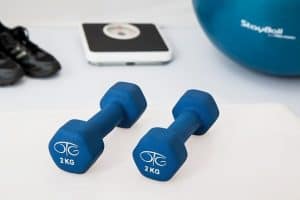For heavy females, choosing the right walking or running shoes is not an easy task. This is particularly s due to the many brands, colors, cushioning technologies, and extensive marketing skills adopted by the many shoe companies. 
In this post, I’ll discuss the differences between the walking shoes vs the running shoes, with special focus to feature great for plus-sized women.
However, barefoot walking would not be effective for long distances (over 6 miles) since you’d lack the required cushioning. In this case, I would recommend the Brooks Glycerin since they are appropriately cushioned and are light.
Running Shoes vs. Walking Shoes for Weight Loss
To begin with, consider the overweight women’s running shoes that come with varied features that heavy female runners need for running. If need be you can visit your nearest store for shoe fitting.
Therefore, it’s important to know your shoe size, shoe shape, or even visit a footwear expert for correct fitting. Critical aspects to consider, besides style, are comfort, stability, functionality, and fit.
Heel Flare
For your running needs, the running shoes come with a flared heel to offer additional stability when you hit the ground at your midfoot. Therefore, its common knowledge that trail running footwear should have a flared heel like supination shoes.
On the other hand, your waling shoe must not come with a flared heel. Notably, as you walk you’ll hit the ground using your heel and hence the flared heel will prevent rolling forward as you step.
Shoe Cushioning
Compared to walkers – as a heavy female runner – you’ll require extra cushioning in your footwear, compression socks, and the best athletic shoes for lower back pain. Recent research shows that runners create an impact of over 3 times their body weight when running – which if not appropriately harnessed could lead to shock on your joints and muscles.
Therefore, as an overweight runner, you’ll require additional cushioning on the forefront and shoe heel compared to the walkers. Walkers must go for light footwear that has enough cushioning to avoid excessive shock on the legs and feet.
Flexible and Breathable
Truth be told, both walking and running footwear must be flexible. To determine whether your shoe is flexible, you’ll need to press down using the shoe’s toe and note the point where it’ll bend.
Many of the available runner’s shoes will flex at the midfoot or arch. However, other models will flex at your forefoot. Such variations are aimed to match varied foot strike needs of different runners.
However, walking must flex only at your forefoot – further not bending at all would be disastrous for walkers. Therefore, shoes that’ll flex at the arch will not offer the necessary support for walkers. Thus avoid stability shoes and motion control footwear since they’d not bend or flex.
Heel Height
Running shoes must have a built-up heel to offer the required stability. However, the difference with various running shoes come with the heel-to-toe drop philosophy you believe. But this depends on where your foot hits the ground first; either the footballs, midfoot, or heel.
However, walkers won’t require a high heel because they strike the ground through the heel and then roll as they step. Therefore, as a walker, you’ll need to go for a shoe that has the smallest difference between the toe and the heel – this should be at most 4 mm but below 8 mm would also work.
Conclusion
While selecting your walking or running shoes, the crista fact is proper fit, comfort and must allow natural motions on your feet.